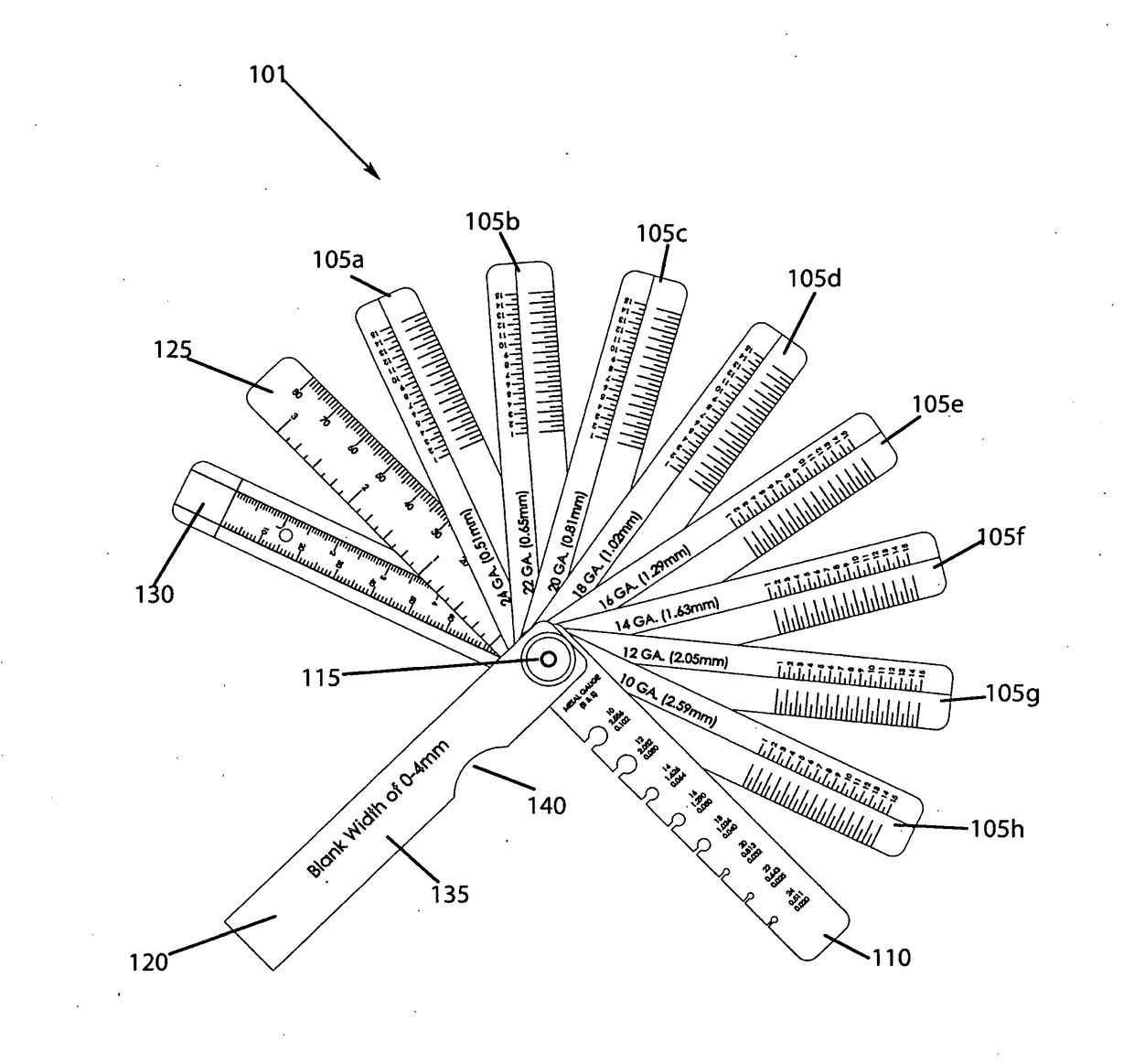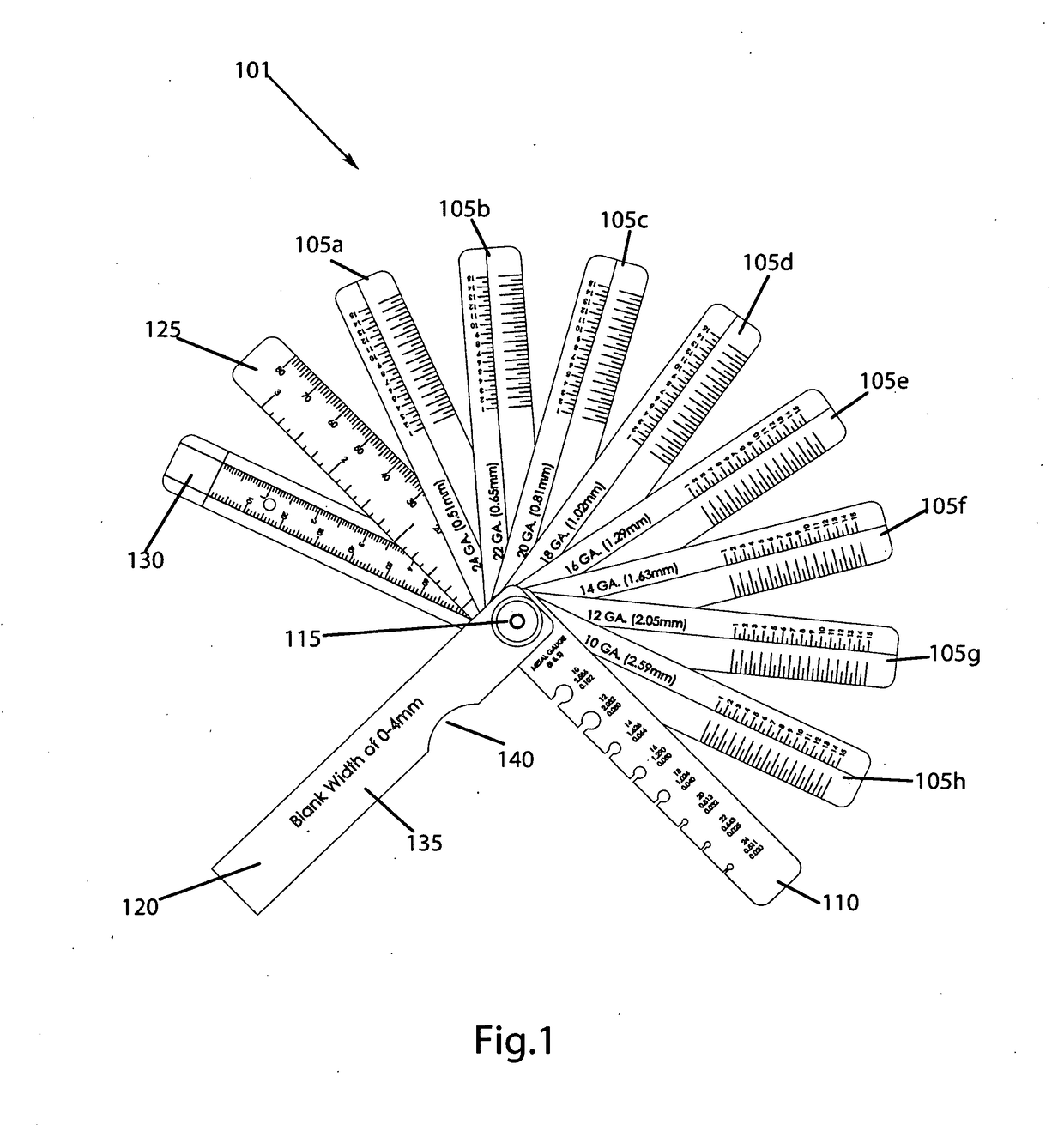Tool for establishing the length of specific thickness stock required to form an enclosed shape having predetermined dimensions.
a technology of specific thickness stock and length, which is applied in the direction of mechanical diameter measurement, measurement gauge, instruments, etc., can solve the problems of increasing fabrication time and cost, insufficient method, and affecting the internal diameter required, so as to save time and resources, reduce manufacturing costs, and improve production efficiency.
- Summary
- Abstract
- Description
- Claims
- Application Information
AI Technical Summary
Benefits of technology
Problems solved by technology
Method used
Image
Examples
Embodiment Construction
[0023]One embodiment of enclosed shape measuring tool version A 101 for determining the length of stock of various shapes such as flat, round, triangular, square, domed etc. of a particular thickness of a given thickness or gauge and width required to form an enclosed shape, ring or tube of a specified internal diameter and / or fit is illustrated in FIG. 1. The tool has a plurality of arms, blades, or leaves such as length measuring arms version A 105a-h, gauge measuring arm version A 110, ruler version A 125, sliding millimeter gauge arm version A 130, that fan out from pivot joint version A 115. The arms that comprise the elements of enclosed shape measuring tool version A 101 fold into a stack that is contained within enclosure version A 120. Enclosure version A 120 covers the measuring edges of elements of enclosed shape measuring tool version A 101 such as length measuring arms version A 105a-h, gauge measuring arm version A 110, ruler version A 125 and sliding millimeter gauge ...
PUM
 Login to View More
Login to View More Abstract
Description
Claims
Application Information
 Login to View More
Login to View More - R&D
- Intellectual Property
- Life Sciences
- Materials
- Tech Scout
- Unparalleled Data Quality
- Higher Quality Content
- 60% Fewer Hallucinations
Browse by: Latest US Patents, China's latest patents, Technical Efficacy Thesaurus, Application Domain, Technology Topic, Popular Technical Reports.
© 2025 PatSnap. All rights reserved.Legal|Privacy policy|Modern Slavery Act Transparency Statement|Sitemap|About US| Contact US: help@patsnap.com



